Sand Media Filters
Sand media filters are a cornerstone of reliable water treatment systems, removing suspended solids, turbidity, and contaminants through a natural, multi-layered filtration process. Whether used in municipal drinking water plants, industrial cooling loops, commercial pools, or agricultural irrigation, these filters offer high-capacity performance and minimal maintenance.
How Sand Media Filtration Works: The Science of Clean Water
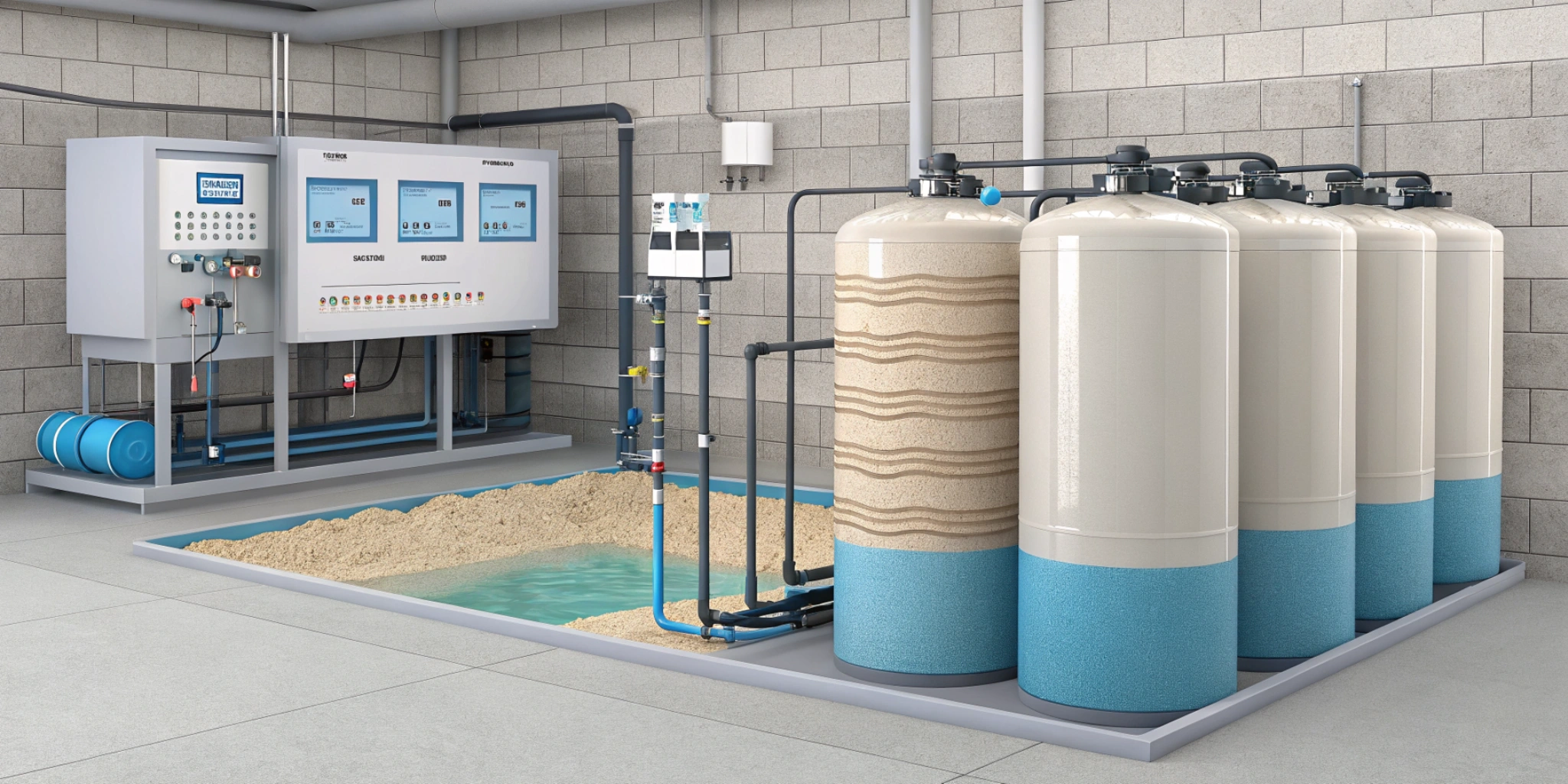
Process
Water flows downward through a bed of graded media (e.g., sand, anthracite), trapping particles as small as 10–20 microns.
Multimedia Advantage
Layered media (anthracite + sand + garnet) boosts efficiency—coarse top layers capture large debris, finer layers remove smaller impurities.
Backwash Cycle
Automated reversal flows clean trapped solids, restoring filter capacity without manual intervention.
Choosing the Right Filter Media for Maximum Efficiency
1
Silica Sand (#20 Grade, 0.45–0.55 mm): Ideal for general filtration.
2
Anthracite Coal: Great for oily or organic-laden water; lighter and supports high flows.
2
3
Garnet: Dense, hard mineral for polishing stages.
4
Greensand™: Specialized for removing iron and manganese (requires regeneration).
4
Types of Sand Media Filters
Rapid Sand Filters
High-flow, ideal for municipal/industrial settings
Backwashing every 24–72 hours
Slow Sand Filters
Relies on biofilm layer (“schmutzdecke”) for organic removal
Low maintenance; excellent for rural communities
Multimedia Filters (MMF)
Performs well under variable flow
3–5 media layers = superior clarity
Often used as pre-treatment for RO membranes
Advantages of Multimedia Filters
5x higher filtration speed
30–50% longer run times between cleanings
Smaller footprint compared to single-media tanks
Real-World Applications of Sand Media Filtration
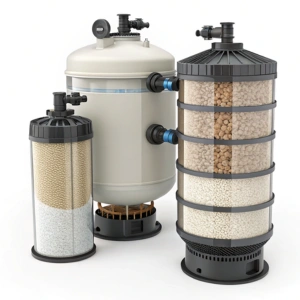
Municipal Water Systems
Primary filtration step
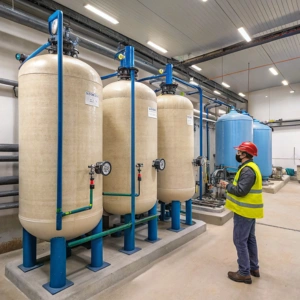
Wastewater Plants
Final polishing for BOD/TSS compliance
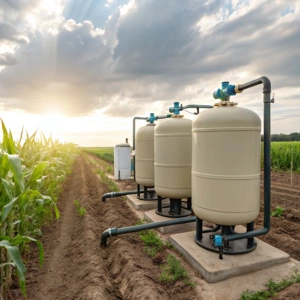
Agriculture
Protects drip emitters and nozzles from clogging
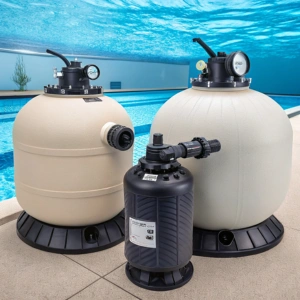
Pools & Aquatics
Keeps water crystal clear
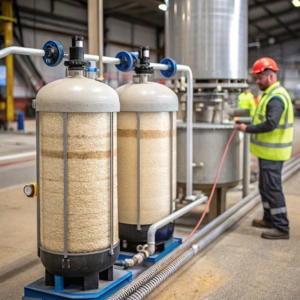
Manufacturing
Treats process water, cooling tower loops, and boiler feedwater
How to Maintain Your Sand Media Filter
Backwash when pressure drop exceeds 8–10 PSI
Use air-scour + water for deeper cleaning
Media Replacement Timeline:Sand: every 3–5 years,Anthracite: every 5–7 years
Watch for: short filter cycles, channeling, damaged underdrain
The Smart Buyer’s Checklist for Sand Filters
Flow Capacity: Match tank to max GPM (e.g., 10–500 GPM)
Media Mix: Silica + Anthracite for general use; Garnet for polish
Tank Build: FRP (light, corrosion-proof) vs. Stainless (pressure-rated)
Automation: Timer-based or pressure-differential controlled backwash
Certifications: NSF/ANSI 61, AWWA B100
Sand Media vs. Cartridge Filters: Which One Wins?
| Feature | Sand Media Filter | Cartridge Filter |
|---|---|---|
| Solids Capacity | High (10x more) | Low |
| Cost Over Time | Lower (Reusable) | Higher (Frequent Replacement) |
| Maintenance | Automated Backwash | Manual Changes |
| Eco-Friendliness | Reusable media | Disposable filters |
Frequently Asked Questions
1. What is a sand media filter and how does it work?
A sand media filter is a water filtration system that removes suspended solids, turbidity, and particles using layers of natural media like silica sand, anthracite, and garnet. Water flows downward through the media bed, where larger debris is caught in the upper layers and finer particles are trapped deeper, producing clean, clear water. Most systems feature an automatic backwash cycle for easy cleaning and long-term operation.
2. What type of media is best for a sand filter?
The best media depends on your application. Standard #20 silica sand is great for general use. Anthracite works well for oily or organic contaminants in high-flow systems. Garnet is ideal for polishing and fine particle removal. For specialized needs like iron and manganese removal, consider Greensand™.
3. How often should you replace sand in a media filter?
On average, silica sand should be replaced every 3 to 5 years to maintain filtration performance. Anthracite may last 5 to 7 years, and garnet typically needs replacement only if pressure loss or poor water quality is observed. Always monitor flow rate and backwash efficiency to determine media life.
4. What’s the difference between multimedia and single-media sand filters?
Multimedia filters use 3 to 5 layers of media—typically anthracite, sand, and garnet—to improve filtration efficiency. They offer higher flow rates, longer run times, and better clarity compared to single-media sand filters, which only use one type of media. MMFs are especially useful for pre-RO and variable-load systems.
5. Are sand filters better than cartridge filters?
Yes—for high-volume or continuous-use systems, sand media filters are more cost-effective and sustainable. They hold more solids, require fewer replacements, and can be backwashed instead of manually changed. Cartridge filters are better for small, low-flow setups but have higher maintenance and operational costs.
6. How do I size a sand media filter for my system?
To size a filter, calculate your system’s peak flow rate (in GPM) and match it with a filter’s rated capacity. For example, if your system peaks at 100 GPM, choose a unit that can handle slightly more to ensure optimal performance during surges. Don’t forget to factor in media depth, tank material, and backwash flow requirements.
7. What certifications should a sand filter have?
For potable or regulated water systems, look for filters certified to NSF/ANSI 61 for health effects and AWWA B100 standards for filter media. These ensure your equipment is safe, tested, and compliant with water industry regulations.
